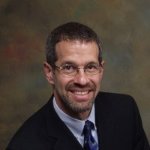Stephen D Lane
age ~51
from Carmichael, CA
- Also known as:
-
- Steve Lane
Stephen Lane Phones & Addresses
- Carmichael, CA
- Atherton, CA
- American Canyon, CA
- Woodside, CA
- Palo Alto, CA
- Concord, CA
- Clayton, CA
- Napa, CA
- Los Angeles, CA
Medicine Doctors

Stephen K. Lane
view sourceSpecialties:
Family Medicine
Work:
Healthcare SouthStephen K Lane MD
56 New Driftway STE 301, Scituate, MA 02066
7815441388 (phone), 7815443396 (fax)
56 New Driftway STE 301, Scituate, MA 02066
7815441388 (phone), 7815443396 (fax)
Education:
Medical School
University of Massachusetts Medical School
Graduated: 1998
University of Massachusetts Medical School
Graduated: 1998
Procedures:
Arthrocentesis
Destruction of Benign/Premalignant Skin Lesions
Destruction of Lesions on the Anus
Electrocardiogram (EKG or ECG)
Hearing Evaluation
Vaccine Administration
Destruction of Benign/Premalignant Skin Lesions
Destruction of Lesions on the Anus
Electrocardiogram (EKG or ECG)
Hearing Evaluation
Vaccine Administration
Conditions:
Abnormal Vaginal Bleeding
Acne
Acute Conjunctivitis
Acute Pharyngitis
Acute Sinusitis
Acne
Acute Conjunctivitis
Acute Pharyngitis
Acute Sinusitis
Languages:
English
Description:
Dr. Lane graduated from the University of Massachusetts Medical School in 1998. He works in Scituate, MA and specializes in Family Medicine. Dr. Lane is affiliated with South Shore Hospital and Tufts Medical Center.

Stephen S. Lane
view sourceSpecialties:
Ophthalmology
Work:
Associated Eye Care
2950 Curv Crst Blvd W, Stillwater, MN 55082
6512753000 (phone), 6512753099 (fax)
Associated Eye Care
14688 Everton Ave N STE 106, Hugo, MN 55038
6512753000 (phone), 6512753214 (fax)
Associated Eye Care
1625 Radio Dr STE 310, Saint Paul, MN 55125
6512753000 (phone), 6512753166 (fax)
2950 Curv Crst Blvd W, Stillwater, MN 55082
6512753000 (phone), 6512753099 (fax)
Associated Eye Care
14688 Everton Ave N STE 106, Hugo, MN 55038
6512753000 (phone), 6512753214 (fax)
Associated Eye Care
1625 Radio Dr STE 310, Saint Paul, MN 55125
6512753000 (phone), 6512753166 (fax)
Education:
Medical School
University of Minnesota Medical School at Minneapolis
Graduated: 1980
University of Minnesota Medical School at Minneapolis
Graduated: 1980
Procedures:
Corneal Surgery
Lens and Cataract Procedures
Ophthalmological Exam
Lens and Cataract Procedures
Ophthalmological Exam
Conditions:
Acute Conjunctivitis
Cataract
Diabetic Retinopathy
Glaucoma
Keratitis
Cataract
Diabetic Retinopathy
Glaucoma
Keratitis
Languages:
English
Spanish
Spanish
Description:
Dr. Lane graduated from the University of Minnesota Medical School at Minneapolis in 1980. He works in Stillwater, MN and 2 other locations and specializes in Ophthalmology. Dr. Lane is affiliated with Childrens Hospitals & Clinics Of Minnesota, Lakeview Hospital and United Hospital.

Stephen F. Lane
view sourceSpecialties:
Anesthesiology
Work:
Greenville Anesthesiology PA
67 Creekside Park Ct, Greenville, SC 29615
8642424602 (phone), 8645223705 (fax)
Greenville Anesthesiology PA
830 S Buncombe Rd, Greer, SC 29650
8642424602 (phone), 8642420129 (fax)
Greenville Anesthesiology PA
701 Grv Rd, Greenville, SC 29605
8642424602 (phone), 8642420129 (fax)
67 Creekside Park Ct, Greenville, SC 29615
8642424602 (phone), 8645223705 (fax)
Greenville Anesthesiology PA
830 S Buncombe Rd, Greer, SC 29650
8642424602 (phone), 8642420129 (fax)
Greenville Anesthesiology PA
701 Grv Rd, Greenville, SC 29605
8642424602 (phone), 8642420129 (fax)
Education:
Medical School
University of South Carolina School of Medicine
Graduated: 1989
University of South Carolina School of Medicine
Graduated: 1989
Languages:
English
Description:
Dr. Lane graduated from the University of South Carolina School of Medicine in 1989. He works in Greenville, SC and 2 other locations and specializes in Anesthesiology. Dr. Lane is affiliated with Greenville Memorial Hospital, Greer Memorial Hospital, Hillcrest Memorial Hospital and Patewood Memorial Hospital.

Stephen M Lane
view sourceUs Patents
-
Chemical Sensor System
view source -
US Patent:6480730, Nov 12, 2002
-
Filed:Dec 20, 2000
-
Appl. No.:09/742775
-
Inventors:Christopher B. Darrow - Pleasanton CA
Stephen M. Lane - Oakland CA
Abraham P. Lee - Walnut Creek CA
Amy W. Wang - Berkeley CA -
Assignee:The Regents of the University of California - Oakland CA
-
International Classification:A61B 505
-
US Classification:600347, 600345
-
Abstract:An implantable chemical sensor system for medical applications is described which permits selective recognition of an analyte using an expandable biocompatible sensor, such as a polymer, that undergoes a dimensional change in the presence of the analyte. The expandable polymer is incorporated into an electronic circuit component that changes its properties (e. g. , frequency) when the polymer changes dimension. As the circuit changes its characteristics, an external interrogator transmits a signal transdermally to the transducer, and the concentration of the analyte is determined from the measured changes in the circuit. This invention may be used for minimally invasive monitoring of blood glucose levels in diabetic patients.
-
Saccharide Sensing Molecules Having Enhanced Fluorescent Properties
view source -
US Patent:6673625, Jan 6, 2004
-
Filed:Mar 30, 2001
-
Appl. No.:09/823522
-
Inventors:Stephen M. Lane - Oakland CA
Christopher B. Darrow - Pleasanton CA
Douglas R. Cary - San Francisco CA
Joe Anh Tran - San Diego CA -
Assignee:The Regents of the University of California - Oakland CA
MiniMed Inc. - Sylmar CA -
International Classification:G01N 3300
-
US Classification:436 94, 436 95, 252700, 422 8207, 546 1, 546 13, 546 15, 546 16, 546 17, 546 26, 546 79, 546101, 546285, 546290, 546296, 546298, 546299
-
Abstract:The present invention provides formulae for fluorescent compounds that have a number of properties which make them uniquely suited for use in sensors of analytes such as saccharides. The advantageous fluorescent properties include favorable excitation wavelengths, emission wavelengths, fluorescence lifetimes, and photostability. Additional advantageous properties include enhanced aqueous solubility, as well as temperature and pH sensitivity. The compound comprises an aryl or a substituted phenyl botonic acid that acts as a substrate recognition component, a fluorescence switch component, and a fluorophore. Fluorescent compounds are described that are excited at wavelengths greater than 400 nm and emit at wavelengths greater than 450 nm, which is advantageous for optical transmission through skin. The fluorophore is typically selected from transition metal-ligand complexes and thiazine, oxazine, oxazone, or oxazine-one as well as anthracene compounds. The fluorescent compound can be immobilized in a glucose permeable biocompatible polymer matrix that is implantable below the skin.
-
Glucose Sensing Molecules Having Selected Fluorescent Properties
view source -
US Patent:6682938, Jan 27, 2004
-
Filed:Sep 15, 2000
-
Appl. No.:09/663567
-
Inventors:Stephen M. Lane - Oakland CA
Christopher B. Darrow - Pleasanton CA
Douglas R. Cary - Oakland CA
Joe Anh Tran - Livermore CA -
Assignee:The Regents of the University of California - Oakland CA
Minimed Inc. - Sylmar CA -
International Classification:G01N 3300
-
US Classification:436172, 568 1
-
Abstract:An analyte sensing fluorescent molecule that employs intramolecular electron transfer is designed to exhibit selected fluorescent properties in the presence of analytes such as saccharides. The selected fluorescent properties include excitation wavelength, emission wavelength, fluorescence lifetime, quantum yield, photostability, solubility, and temperature or pH sensitivity. The compound comprises an aryl or a substituted phenyl boronic acid that acts as a substrate recognition component, a fluorescence switch component, and a fluorophore. The fluorophore and switch component are selected such that the value of the free energy for electron transfer is less than about 3. 0 kcal mol. Fluorescent compounds are described that are excited at wavelengths greater than 400 nm and emit at wavelengths greater than 450 nm, which is advantageous for optical transmission through skin. The fluorophore is typically selected from transition metal-ligand complexes and thiazine, oxazine, oxazone, or oxazine-one as well as anthracene compounds. The fluorescent compound can be immobilized in a glucose permeable biocompatible polymer matrix that is implantable below the skin.
-
Selectively-Etched Nanochannel Electrophoretic And Electrochemical Devices
view source -
US Patent:6818964, Nov 16, 2004
-
Filed:Sep 30, 2002
-
Appl. No.:10/261349
-
Inventors:Michael P. Surh - Livermore CA
William D. Wilson - Pleasanton CA
Stephen M. Lane - Oakland CA -
Assignee:The Regents of the University of California - Oakland CA
-
International Classification:H01L 2900
-
US Classification:257531, 257724
-
Abstract:Nanochannel electrophoretic and electrochemical devices having selectively-etched nanolaminates located in the fluid transport channel. The normally flat surfaces of the nanolaminate having exposed conductive (metal) stripes are selectively-etched to form trenches and baffles. The modifications of the prior utilized flat exposed surfaces increase the amount of exposed metal to facilitate electrochemical redox reaction or control the exposure of the metal surfaces to analytes of large size. These etched areas variously increase the sensitivity of electrochemical detection devices to low concentrations of analyte, improve the plug flow characteristic of the channel, and allow additional discrimination of the colloidal particles during cyclic voltammetry.
-
Selectively-Etched Nanochannel Electrophoretic And Electrochemical Devices
view source -
US Patent:7067351, Jun 27, 2006
-
Filed:Jun 8, 2004
-
Appl. No.:10/864778
-
Inventors:Michael P. Surh - Livermore CA, US
William D. Wilson - Pleasanton CA, US
Stephen M. Lane - Oakland CA, US -
Assignee:The Regents of the University of California - Oakland CA
-
International Classification:H01L 21/44
-
US Classification:438107, 438245, 438607, 257E21586, 257751, 257499, 427250, 427252, 42725515, 42725523, 42725526, 42725528, 4272557
-
Abstract:Nanochannel electrophoretic and electrochemical devices having selectively-etched nanolaminates located in the fluid transport channel. The normally flat surfaces of the nanolaminate having exposed conductive (metal) stripes are selectively-etched to form trenches and baffles. The modifications of the prior utilized flat exposed surfaces increase the amount of exposed metal to facilitate electrochemical redox reaction or control the exposure of the metal surfaces to analytes of large size. These etched areas variously increase the sensitivity of electrochemical detection devices to low concentrations of analyte, improve the plug flow characteristic of the channel, and allow additional discrimination of the colloidal particles during cyclic voltammetry.
-
Nanolaminate Microfluidic Device For Mobility Selection Of Particles
view source -
US Patent:7118661, Oct 10, 2006
-
Filed:Sep 30, 2002
-
Appl. No.:10/261392
-
Inventors:Michael P. Surh - Livermore CA, US
William D. Wilson - Pleasanton CA, US
Stephen M. Lane - Oakland CA, US -
Assignee:The Regents of the University of California - Oakland CA
-
International Classification:G01N 27/453
-
US Classification:204601, 204643, 422100
-
Abstract:A microfluidic device made from nanolaminate materials that are capable of electrophoretic selection of particles on the basis of their mobility. Nanolaminate materials are generally alternating layers of two materials (one conducting, one insulating) that are made by sputter coating a flat substrate with a large number of layers. Specific subsets of the conducting layers are coupled together to form a single, extended electrode, interleaved with other similar electrodes. Thereby, the subsets of conducting layers may be dynamically charged to create time-dependent potential fields that can trap or transport charge colloidal particles. The addition of time-dependence is applicable to all geometries of nanolaminate electrophoretic and electrochemical designs from sinusoidal to nearly step-like.
-
Hand-Held Portable Microarray Reader For Biodetection
view source -
US Patent:8428398, Apr 23, 2013
-
Filed:Jun 29, 2010
-
Appl. No.:12/826215
-
Inventors:Deanna Lynn Thompson - Orangevale CA, US
Matthew A. Coleman - Oakland CA, US
Stephen M. Lane - Oakland CA, US
Dennis L. Matthews - Gold River CA, US
Joanna Albala - Stockton CA, US
Sebastian Wachsmann-Hogiu - Sacramento CA, US -
Assignee:Lawrence Livermore National Security, LLC - Livermore CA
The Regents of the University of California - Oakland CA -
International Classification:G06K 9/22
-
US Classification:382313, 348294
-
Abstract:A hand-held portable microarray reader for biodetection includes a microarray reader engineered to be small enough for portable applications. The invention includes a high-powered light-emitting diode that emits excitation light, an excitation filter positioned to receive the excitation light, a slide, a slide holder assembly for positioning the slide to receive the excitation light from the excitation filter, an emission filter positioned to receive the excitation light from the slide, a lens positioned to receive the excitation light from the emission filter, and a CCD camera positioned to receive the excitation light from the lens.
-
Fluorescent Lifetime Assays For Non-Invasive Quantification Of Analytes Such As Glucose
view source -
US Patent:20020043651, Apr 18, 2002
-
Filed:Apr 4, 2001
-
Appl. No.:09/826745
-
Inventors:Christopher Darrow - Pleasanton CA, US
Joe Satcher - Patterson CA, US
Stephen Lane - Oakland CA, US
Jennifer Gable - Livermore CA, US -
International Classification:G01N031/00
-
US Classification:252/408100
-
Abstract:The invention disclosed herein provides fluorescence based methods for the determination of polyhydroxylated analyte concentrations as well as optical polyhydroxylate analyte sensors and sensor systems. In particular, the invention provides methods of quantifying the abundances or concentrations of polyhydroxylate analyte by measuring changes in the fluorescence lifetimes. The methods of the invention are based on the observation that fluorescent sensor molecules capable of binding a polyhydroxylated analyte such as glucose have distinct fluorescent lifetimes depending upon whether they are in a form that is either bound to analyte or a form that is not bound to the analyte. The distinct and measurable differences in the fluorescence lifetimes of the different fluorescent sensor species can be used to determine the relative abundance of the bound and unbound fluorescent sensor species, a parameter which can then be correlated to the concentration of the analyte.
Name / Title
Company / Classification
Phones & Addresses
STERHO INVESTMENTS, LLC
LANE EXCAVATING LLC
PHG VENTURES, LLC
Chief Scientific Officer
Center for Biophotonics
Noncommercial Research Organization
Noncommercial Research Organization
2700 Stockton Blvd, Sacramento, CA 95817
9167348600
9167348600
President
ESII, ENGINEERED SYSTEMS INTEGRATION, INC
370 N Wiget Ln, Walnut Creek, CA 94598
Manager
Brugal, LLC
2000 Ave Of The Stars, Los Angeles, CA 90067
3730 Oakpark Ct, Concord, CA 94519
2350 Woodside Rd, Redwood City, CA 94062
3730 Oakpark Ct, Concord, CA 94519
2350 Woodside Rd, Redwood City, CA 94062
Resumes

Sr. Director Of Engineering, Mfg Operations @ Riverbed
view sourceLocation:
San Francisco Bay Area
Industry:
Computer Networking

Attorney At Keleher & Mcleod, P.a.
view sourcePosition:
Attorney at Keleher & McLeod, P.A.
Location:
Albuquerque, New Mexico
Industry:
Law Practice
Work:
Keleher & McLeod, P.A. - Albuquerque, New Mexico Area since Jan 2012
Attorney
Law Office of Stephen E. Lane Oct 2009 - Jan 2012
Attorney
New Mexico Public Defender Department Aug 2008 - Sep 2009
Assistant Public Defender
Inocente, PC Jun 2006 - Aug 2008
Law clerk
New Mexico Public Defender Department Aug 2007 - Dec 2007
Legal intern
Attorney
Law Office of Stephen E. Lane Oct 2009 - Jan 2012
Attorney
New Mexico Public Defender Department Aug 2008 - Sep 2009
Assistant Public Defender
Inocente, PC Jun 2006 - Aug 2008
Law clerk
New Mexico Public Defender Department Aug 2007 - Dec 2007
Legal intern
Education:
The University of New Mexico School of Law 2006 - 2008
The University of New Mexico 1994 - 1997
BA, Anthropology, History
The University of New Mexico 1994 - 1997
BA, Anthropology, History

Senior Pastor At Elizabethtown Bic Church, Adjunct Professor At Messiah College, Biblical Studies And Theology
view sourcePosition:
Senior Pastor at Elizabethtown BIC Church, Adjunct Instructor, Theology & Biblical Studies at Messiah College, board member at Everence Community Investments, Faculty at Equipping for Ministry Theological Education, Board Member at Everence Financial
Location:
Elizabethtown, Pennsylvania
Industry:
Religious Institutions
Work:
Elizabethtown BIC Church - http://etownbic.org/ since May 2008
Senior Pastor
Messiah College since 1999
Adjunct Instructor, Theology & Biblical Studies
Everence Community Investments since 2007
board member
Equipping for Ministry Theological Education since 2004
Faculty
Everence Financial since Oct 2006
Board Member
Senior Pastor
Messiah College since 1999
Adjunct Instructor, Theology & Biblical Studies
Everence Community Investments since 2007
board member
Equipping for Ministry Theological Education since 2004
Faculty
Everence Financial since Oct 2006
Board Member
Education:
Gordon-Conwell Theological Seminary 2003 - 2006
Doctor of Ministry (D.Min.) Gordon-Conwell Theological Seminary 1994 - 1998
Master of Divinity (M.Div.) University of New Hampshire
BA, Communications
Doctor of Ministry (D.Min.) Gordon-Conwell Theological Seminary 1994 - 1998
Master of Divinity (M.Div.) University of New Hampshire
BA, Communications
Skills:
Leadership Development
Theology
Biblical Studies
Evangelism
Discipleship
Expository Preaching
Preaching
Strategic Planning
Public Speaking
Teaching
Pastoral Care
Theology
Biblical Studies
Evangelism
Discipleship
Expository Preaching
Preaching
Strategic Planning
Public Speaking
Teaching
Pastoral Care

Floor Supervisor At Tommy Bahama's
view sourcePosition:
Floor Supervisor at Tommy Bahama's
Location:
San Francisco Bay Area
Industry:
Legal Services
Work:
Tommy Bahama's
Floor Supervisor
Floor Supervisor

Stephen Lane
view sourceLocation:
United States

Stephen Lane
view sourceLocation:
United States

Jd/Mba At Northwestern University
view sourcePosition:
JD/MBA at Northwestern University
Location:
Chicago, Illinois
Industry:
Real Estate
Work:
Microsoft since Mar 2011
Finance Manager
JP Morgan Chase Aug 2010 - Feb 2011
Rising Associate Program
JP Morgan Chase Jul 2008 - Aug 2010
Finance Analyst Development Program
The Weitzman Group Jan 2008 - Jun 2008
Broker Assistant
Star Vista Capital Aug 2007 - Dec 2007
Intern
Finance Manager
JP Morgan Chase Aug 2010 - Feb 2011
Rising Associate Program
JP Morgan Chase Jul 2008 - Aug 2010
Finance Analyst Development Program
The Weitzman Group Jan 2008 - Jun 2008
Broker Assistant
Star Vista Capital Aug 2007 - Dec 2007
Intern
Education:
The University of Texas at Austin 2005 - 2008
Bachelor of Business Administration, Finance The University of Edinburgh 2007 - 2007
Bachelor of Business Administration, Finance The University of Edinburgh 2007 - 2007
Certifications:
CFA
License Records
Stephen Carter Lane
License #:
2705068290
Category:
Contractor
Isbn (Books And Publications)



Nano-biophotonics Applications in Advanced Cellular And Molecular Imaging
view sourceAuthor
Stephen M. Lane
ISBN #
0849372755

New Optical Sensor And Assays for Biophotonic Applications
view sourceAuthor
Stephen M. Lane
ISBN #
0849372844

Stephen Lane Walters
view source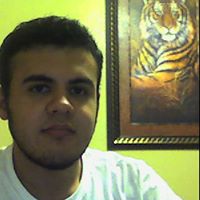
Stephen Lane Meador
view source
Stephen Lane Ward
view source
Stephen Duddy Lane Jr.
view source
Stephen Lane Otterman
view source
Stephen Lane Glenn
view source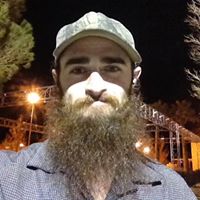
Stephen Anthony Lane
view source
Stephen Daniel Lane
view sourceYoutube
Plaxo

Stephen Lane
view sourceManaging Partner at Lane Lane LLC

Stephen Lane
view sourceSenior Software Developer at Vigilar

Stephen Lane
view sourceDirector at S and H Operations Ltd

Stephen Lane
view sourceron adams a/c
Classmates

Stephen Lane
view sourceSchools:
Sparrows Point Jr.Sr.High Sparrows Point MD 1969-1973
Community:
Donna Goodwin, Steve Ferguson, Ron Watson

Stephen Lane
view sourceSchools:
Peoples Academy Morrisville VT 1984-1988, Lamoille Union High School Hyde Park VT 1984-1988
Community:
Mandy Hernandez

Stephen Lane
view sourceSchools:
Rochester High School Rochester TX 1986-1990
Community:
Raymond Gutierrez, Billy Hollingsworth, Dale Johnston

Stephen Lane
view sourceSchools:
GRANITE CITY HIGH Granite City IL 2002-2006
Community:
Sandy Sides

Stephen Lane
view sourceSchools:
Petersburg High School Petersburg IN 1962-1966
Community:
Richard Montgomery, Leslie Howard

Stephen Lane
view sourceSchools:
Walkersville High School Walkersville MD 1996-2000
Community:
Laurie Christy, Cassandra Wagner, Ronnie West

Stephen Lane
view sourceSchools:
St. John's High School Darlington SC 1983-1987
Community:
Patti Tindal, Mike Deridder, Donda Hoffman

Stephen Lane
view sourceSchools:
Middle Sackville School Sackville Swaziland 1968-1972
Community:
Mike Nethercott
Myspace
Flickr
Googleplus
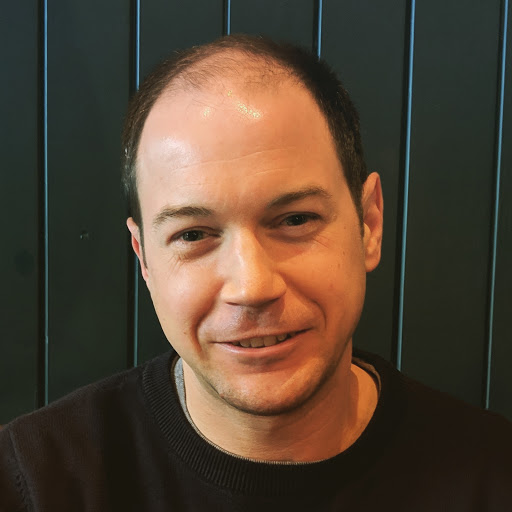
Stephen Lane
Work:
Tigerfish Interactive - Website Developer (2012)
Grow in Gloucestershire - Volunteer Website Developer (2011-2012)
Allan Webb Ltd - Supervisor (2006-2009)
Grow in Gloucestershire - Volunteer Website Developer (2011-2012)
Allan Webb Ltd - Supervisor (2006-2009)
Education:
University of Gloucestershire - Information Technology
About:
Website Developer, Swimmer and Sports Fan.
Bragging Rights:
2nd Dan in Kick-boxing

Stephen Lane
Work:
USMC - Infantry (3)
Education:
Lake Superior State University - Criminal Justice
Tagline:
The older I get the harder I find it to describe myself.

Stephen Lane
Work:
Securitas AB - Security gaurd (2008)
Education:
Beechwood
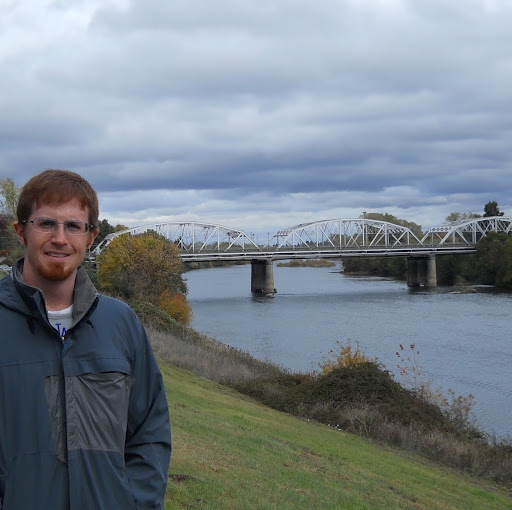
Stephen Lane
Work:
Cytec Industries, Inc. - Lab Tech
Education:
California State University, Fullerton

Stephen Lane
Education:
Irvine Valley College - Mathematics
Tagline:
Available in 5.1 Surround Sound

Stephen Lane
Education:
Marion high school

Stephen Lane
Relationship:
Married

Stephen Lane
Get Report for Stephen D Lane from Carmichael, CA, age ~51
